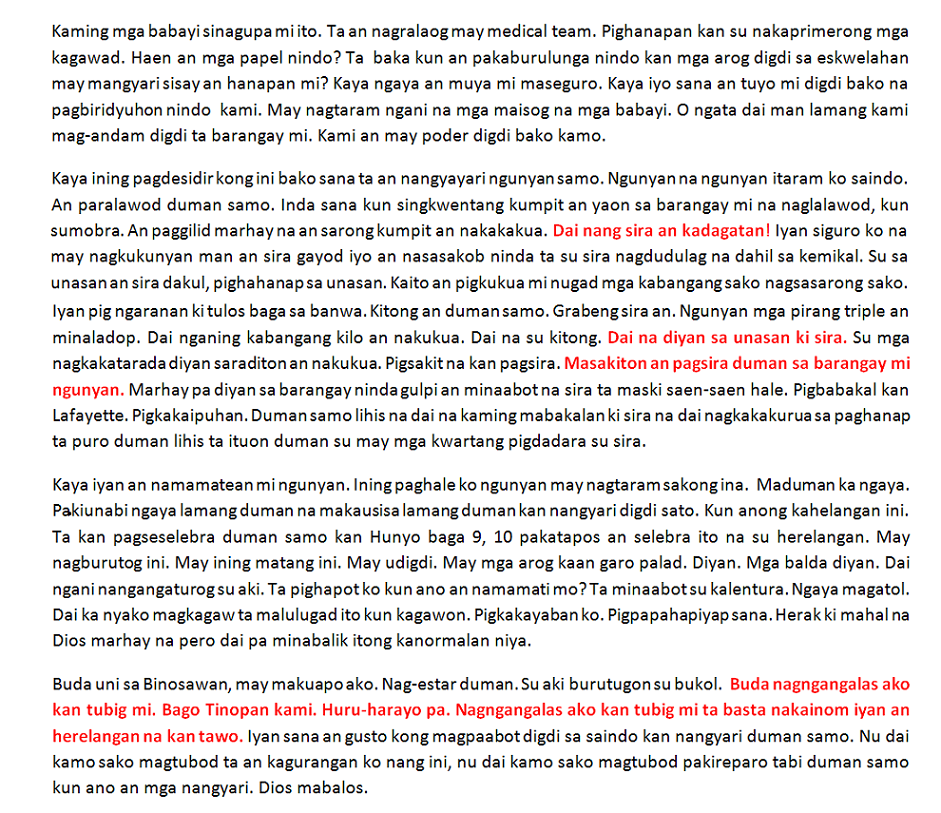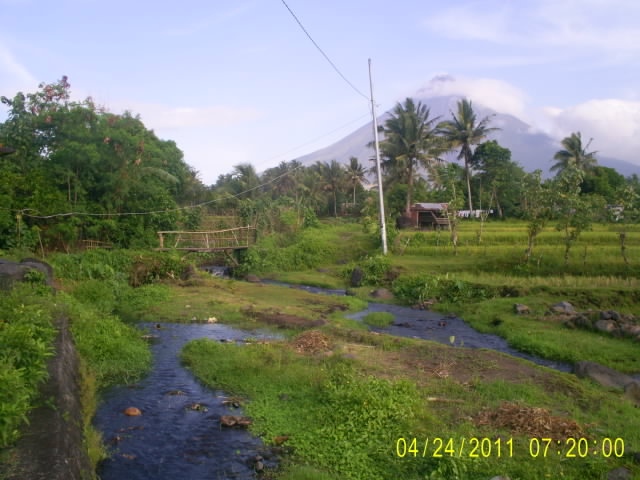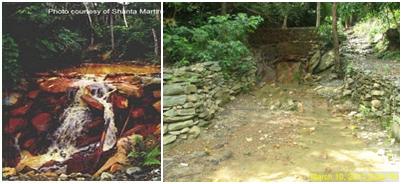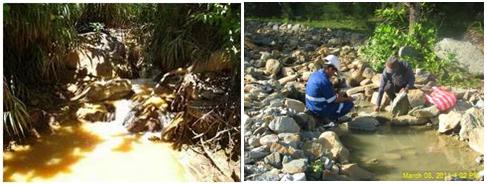Sunday, April 20, 2008
Risa Hontiveros-Baraquel
Life of the Party
By Rome Jorge, Lifestyle Editor
She points to her party’s pin on her lapel to explain her party’s politics—three figures linking arms, each with a different colour. Party-list Representative Risa Hontiveros-Baraquel of Akbayan explains, “Red is for socialist, green for environmentalist and purple for feminist. We have an environmental platform in our party that guides both our launching of and support for local campaigns as well as our legislative work here in the house.”
Rep. Hontiveros is the standard bearer of a party that declares the environment a cornerstone of its ideology. As the world is set to celebrate Earth Day, she is one among a few who has been at environmental forefront long before the 22nd of April and who can be trusted to fight the good fight long after the fanfare of the day fades.
Among an assemblage sputtering on the tiresome last names of political dynasties, the faltering momentum of past showbiz careers and other power sources of personality politics, Rep. Hontiveros is fuelled instead by ideology. And it is one that burns cleanly and bright.
“The issues that we’ve taken an immediate interest and try to engage in are: large-scale commercial mining and logging, solid waste management, renewable energy and water as a human right,” she declares.
Asked to elaborate on her parties stand and accomplishment on each issue, she immediately delves into them point by point without so much as a glance at a document or a request for any such from her staff. Each question immediately triggers a veritable avalanche of data. Not a single “um,” “ah” or “er” impedes her flow of words. Without being prompted, she even spells out the acronyms she uses for the benefit of her listener.
Mining
“We are against large-scale commercial mining, whether by Filipinos or by foreign companies. It is out of the question. On the legislative front, it is our position that the Philippine Mining Act should be repealed and replaced with alternative legislation that will ban large-scale commercial mining but will explore small scale and medium scale community-based traditional mining,” she states.
“On the legal/judicial front, we filed a petition in court questioning a particular provision on the Philippine Mining Act for which there is now a DENR [Department of Environment and Natural Resources] department order. This is the FTAA—Financial and Technical Assistance Agreement—that allows foreign companies to violate of the constitutional provision of 60/40—60 percent minimum Filipino ownership and 40 percent maximum foreign ownership. [Many foreign companies allegedly use local fronts]. DENR provides that if the taxes, royalties and fees paid by a mining company amount to 50 percent or more of their net profit, they are exempted from paying additional taxes,” she explains.
“Even a simple sari-sari [neighbourhood variety] store that has a thin profit margin has to pay these taxes as a matter of course. Why should these mining companies—which are extracting non-renewable resources from the Philippines , enjoying tax holidays and remitting their profits 100 percent—be exempt from paying additional taxes? It’s a double standard that really gives a lie to the argument being peddled by DENR and the administration that mining will give us big earnings. Even the LGUs [local governments] that should profit from the additional taxes in mining affected communities will not gain anything,” she notes.
Indigenous communities most often do not benefit appreciably from mining, as locals more often than not do not have the skills or education for any but the most menial and dangerous jobs that mining companies have to offer. “There’s not transfer of technology. All the white-collar jobs are all imports. And when the mining company pulls out, there’s no sustainable employment,” she notes, adding, “Add to that the negative health impact on the people and the environment.” Locals must contend with mining’s lasting effects such as heavy metals poisoning of water sources for fishing, irrigation and drinking water.
“Marinduque is one of the most scandalous examples,” she notes. The Marcopper Mining Corp. operation on the island discharged from 1969 to 1990 more than 84 million metric tons of mine tailings that have smothered the Calancan Bay and the Makulapnit and Boac Rivers according to the United Nations Department of Humanitarian Affairs.
Rep. Hontiveros alleges that mining companies also set up false non-government organizations “in collusion with DENR to pretend that there was consultation, that there was FPIC—free, prior and informed consent—which there really wasn’t. Even the ECC—the environmental compliance certificate—was gained by fraudulent means.”
She adds, “We are working with mining affected communities in Akbayan areas and Alyansa Tigil Mina [Alliance Against Mining] on specific campaigns in Kalatagan, Sibuyan Islands , etc.”
Logging
“We pointed out what happened in Akbayan communities in Aurora and Quezon provinces because of the denudation in the mountain areas. When the storms came, there were flash floods. It was a nightmare,” she recalls. Flash floods in the Aurora-Quezon area and mudslides in Leyte in 2003 and 1991 killed at least 176, 200 people and 6,000 people respectively. Rampant logging in watershed areas led to both tragedies.
Logging consistently dries up aquifers, streams and other sources for irrigation and drinking water. It also causes land erosion, river siltation and irreversible loss of soil fertility. According to the Food and Agriculture Organization of the United Nations, less than 3 percent of the primary forest cover of the Philippines remains and secondary growth forests are being destroyed at 480 hectares a day. Deforestation threatens not only plant and animal species unique and endemic to the country, but also the food security and the access to potable water of Filipinos.
“Together with the NTFP [non-timber forest product], we really have to preserve the timberlands. These have to be rehabilitated and protected from large-scale mechanized logging,” declares Rep. Hontiveros.
“We have a bill to strengthen the EIA or environmental impact assessment system, especially what requirements development corporations must pass before large projects are implemented in environmentally critical areas, whether these are primary forests, watersheds or ancestral domain areas. This covers all environmental issues,” the congresswoman notes.
Renewable Energy
She reveals, “We have a bill on renewable energy that will soon go into second reading, interpolation and debate. We’ve tried to cull lessons from other countries including the Asia-Pacific region for how we can give incentives to communities. For us, this is another model of people power. It’s organized communities having learned the technology being able to map what resources there are in the community—ranging from wind to solar to tidal to biomass—and project what percentage of their energy needs can actually be generated and how they can replace their dependence on the dirtiest of energy sources like coal and fossil fuel.”
Wind farms in Mahatao, Batanes and Bangui , Ilocos Norte have been in operation since August 2004 and June 2005 respectively. Other potential sites include Bohol, Mindoro, Panay, Palawan and eastern Mindanao . Case in point: the Bangui wind farm has already produced a 7-percent reduction in power costs and is projected to provide 70 percent of province’s energy needs if and when its second phase is implemented.
There are also developments in solar energy. The Cagayan Electric Power & Light Co., Inc. Photovoltaic Power Plant in Cagayan de Oro City, Misamis Oriental, in operation since September 2004, generates 1.1 megawatts of power to supply over 900 residential customers and is possibly the largest solar plant of its kind in the developing world. It operates in conjunction with the 7-megawatt Bubunawan Power Company run-of-the-river hydro power plant.
Rep. Hontiveros adds, “Biomass is a very rich resource because we are an agricultural country. The great thing about biomass is its alternative to these biofuels that is not turning out to be not-so-environment-friendly and not food security-friendly at all.” Latest studies project that large-scale use of biofuels such as ethanol from corn and cane sugar and biodiesel from vegetable oil will not only release large quantities of greenhouse gases that cause global warming, they will also raise the prices of basic food crops even further, impacting the poor.
She also notes that tapping tidal energy—though still an emerging technology—shows great potential in our archipelagic country. “Perhaps, with the help of our very passionate yet sadly underfunded research and technology community, develop domestic appropriate technologies to tap these energy sources,” she opines.
Solid Waste Management
“We have a great need for much better enforcement of the Solid Waste Management Act. Even some of the local governments which are headed or staffed by Akbayan people have gone into pilot areas for solid waste management,” attests Rep. Hontiveros.
“On the front end, we, with the environmental community, have been developing advocacies and legislation on EPR—extended producer responsibilities—talking to industry to go back to the drawing board with the design of their products to reduce their waste component and increase those that can be reduced or recycled,” she explains.
“But of course, our immediate problem is the back end, that we have so much garbage,” she exclaims. Solid waste is festering problem that nobody wants to have in their neighbourhood. The recent struggle among local government officials in Rizal over a 19-hectare provincial landfill illustrates this problem, as Metro Manila has nowhere to dump its garbage. These garbage dumps not only take up precious land and despoil surrounding areas with their stench; they can and will often contaminate groundwater.
“A lot of it is because of packaging. A lot of it is throwaway. A lot of it also is industrial waste. But much of it is also household generated,” she notes. The congresswoman opines, “We have to close the dumpsites and invest more in MRFs—materials recovery facilities—recycling and reuse can be done.”
“But down to the household level—and this involves a change of consciousness—we have to sort our garbage between biodegradable and non-biodegradable,” she advocates.
Water as a human right
Approved by congress in 1995, the National Water Crisis Act led to the auctioning of the Metropolitan Waterworks and Sewerage System to two large local companies and their foreign partners. Prompting this was the government’s admission that it lacked the $7.5 billion to rehabilitate and expand water services as well as the World Bank’s insistence on privatization of various sectors.
Akbayan has decried the privatization of water services, noting this move has made water delivery neither cheaper nor more efficient. Various groups, most notably the World Health Organization, has advocated that access to potable drinking water be recognized as a basic human right—and not as a commodity.
The thin red line
As her words bear out, Rep. Hontiveros is what some political pundits would praise as a “wonk”—originally a colloquial word for an excessively studious person, now a description of politicians with ability to cite the specifics of their programs extemporaneously. Simply put, Rep. Hontiveros knows what she’s talking about. And that is rare in government.
In a congress full of grandstanding buffoons, no-nothing celebrities, place-holding spouses and children, mad men and even madder women, all hiding behind speechwriters, publicists and private armies, Rep. Hontiveros stands apart.
“In Akbayan, despite the possible electoral cost to us, we are taking the stand of anti-trapo [traditional politician]. We reject the trapo administration. But we also reject trapos who may say they’re in the opposition, but who, if they come to power, will implement the same policies,” she declares.
And she distinguishes her party from other leftist groups as well. “The ‘Reaffirmists’ are part of the old Left, which is sectarian and vanguardist. Akbayan is part of the New Left, which is democratic and wants to change the system and is building a reform constituency for that,” she declares.
The split between “reaffimist” and “rejectionist” camps in the left can be traced to bloody purges within the ranks of the movement that occurred during the 1980s as deep penetration agents of the Marcos dictatorship began unravelling the movement. It also stemmed from ideological differences such as between those advocating traditional Maoist doctrines and those engaging in urban insurgency.
“We have some members, even among our officers, who used to be with them, but who are now ‘Rejectionists.’ And until now they are on the order of battle of the New Peoples Army [NPA]. We have local leaders who’ve been killed by the NPA,” she alleges. She also accuses the “reaffirmists” of cultivating ties with traditional politicians. “We differ on them with that. It’s not just a tactical-electoral issue,” she declares.
She speaks softly, but packs big hard-hitting words.
Once a television journalist and host, Rep. Risa Hontiveros-Baraquel now makes the news. And she is there to paint a picture of a better world in green, as well as red and purple.

































































































































1 comment:
Industrial Society Destroys Mind and Environment.
Industrial Society is destroying necessary things [Animals, Trees, Air, Water and Land] for making unnecessary things [consumer goods].
"Growth Rate" - "Economy Rate" - "GDP"
These are figures of "Ecocide".
These are figures of "crimes against Nature".
These are figures of "destruction of Ecosystems".
These are figures of "Insanity, Abnormality and Criminality".
The link between Mind and Social / Environmental-Issues.
The fast-paced, consumerist lifestyle of Industrial Society is causing exponential rise in psychological problems besides destroying the environment. All issues are interlinked. Our Minds cannot be peaceful when attention-spans are down to nanoseconds, microseconds and milliseconds. Our Minds cannot be peaceful if we destroy Nature [Animals, Trees, Air, Water and Land].
Destroy the system that has killed all ecosystems.
Destroy the society that plunders, exploits and kills earth 365 days of the year and then celebrates Earth Day.
Chief Seattle of the Indian Tribe had warned the destroyers of ecosystems way back in 1854 :
Only after the last tree has been cut down,
Only after the last river has been poisoned,
Only after the last fish has been caught,
Only then will you realize that you cannot eat money.
To read the complete article please follow any of these links.
Industrial Society Destroys Mind and Environment
Industrial Society Destroys Mind and Environment
Industrial Society Destroys Mind and Environment
Industrial Society Destroys Mind and Environment
sushil_yadav
Delhi, India
Post a Comment